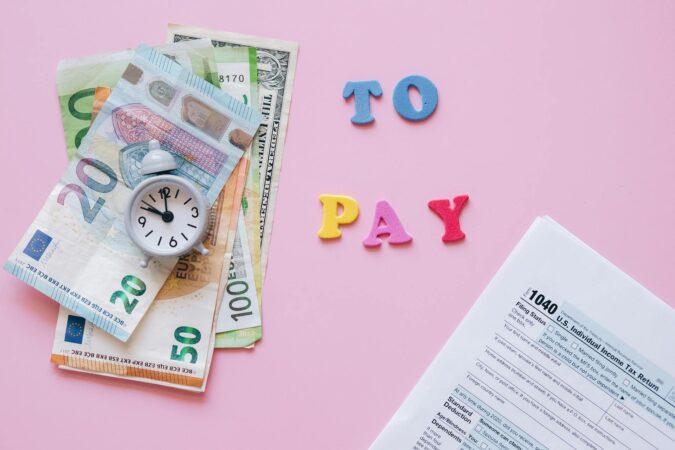This article may contain references to products or services from one or more of our advertisers or partners. We may receive compensation when you click on links to those products or services. Nonetheless, our opinions are our own.
The information presented in this article is accurate to the best of our knowledge at the time of publication. However, information is subject to change, and no guarantees are made about the continued accuracy or completeness of this content after its publication date.
- Regaining Control of Credit Card Debt in Seven Practical Steps
- Recognizing How Credit Card Debt Impacts Your Finances
- Building a Functional and Sustainable Budget
- Choosing a Repayment Strategy That Suits Your Style
- Expanding Income to Accelerate Debt Elimination
- Avoiding Behaviors That Perpetuate Debt
- Maintaining Momentum and Morale
- Conclusion
- Clarifying Common Concerns
- Recommended Reads
Regaining Control of Credit Card Debt in Seven Practical Steps
Mounting credit card balances can quietly erode financial stability, often compounded by high interest rates and inconsistent payment habits. For those looking to restore order to their finances, a structured plan can provide clarity and direction. The following strategies offer a thoughtful approach to reducing credit card debt, framed with realistic actions and a focus on long-term results.
Recognizing How Credit Card Debt Impacts Your Finances
Credit card debt frequently accumulates through a combination of lifestyle habits and compounding interest. Every time a balance carries over into the next month, interest charges escalate, further increasing the total owed. Learning how this process works can inform better decision-making.
Factors That Influence Debt Growth
- Interest rates: The annual percentage rate significantly affects the total repayment amount. A higher APR means a larger portion of each payment goes toward interest rather than principal.
- Minimum payments: These are structured to benefit the lender, often covering only a fraction of the actual debt. Relying solely on minimum payments extends the repayment timeline and increases the final cost.
- Credit utilization: High utilization ratios can lower credit scores and signal financial stress. Keeping balances well below credit limits supports healthier credit profiles.
Comparative Repayment Illustration
| Balance | Monthly Payment | Months to Repay | Total Interest Paid |
|---|---|---|---|
| $5,000 | $200 | 30 | $1,200 |
| $5,000 | $500 | 10 | $300 |
A higher monthly payment dramatically reduces both repayment time and total interest, emphasizing the value of an aggressive strategy.
Building a Functional and Sustainable Budget
Effective budgeting blends awareness with intention. Begin by assessing total monthly income, followed by a careful breakdown of expenditures. Classify outflows into fixed and variable costs to identify opportunities for adjustment.
Sample Budget Allocation
| Category | Percentage of Income |
|---|---|
| Housing | 30% |
| Utilities | 10% |
| Groceries | 15% |
| Transportation | 10% |
| Debt Repayment | 20% |
| Savings | 15% |
Regularly revisiting and adjusting this structure allows for flexible responses to life changes while staying committed to repayment goals.
Choosing a Repayment Strategy That Suits Your Style
 Eliminating debt requires consistency and a method that complements individual motivation. Two proven approaches are widely used:
Eliminating debt requires consistency and a method that complements individual motivation. Two proven approaches are widely used:
Debt Avalanche
Prioritize cards with the highest interest rates. This method reduces the overall cost of debt and shortens the payoff period, though early wins may be slower.
Debt Snowball
Focus on clearing the smallest balances first. This can create a strong sense of progress, maintaining momentum through psychological reinforcement.
Tips for Implementation
- Structure a monthly debt repayment plan within your budget.
- Automate payments to avoid missed deadlines and late fees.
- Consider balance transfers if your credit qualifies, reducing interest temporarily.
Voted "Best Overall Budgeting App" by Forbes and WSJ
Monarch Money helps you budget, track spending, set goals, and plan your financial future—all in one app.
Get 50% OFF your first year with code MONARCHVIP
Expanding Income to Accelerate Debt Elimination
Reducing expenses only addresses one side of the equation. Generating additional income creates more flexibility and accelerates debt reduction.
Ideas for Supplementary Earnings
- Freelancing: Skills such as writing, editing, or digital design can yield income through contract-based work.
- Part-time employment: Flexible roles offer consistent earnings without a long-term commitment.
- Gig work: Driving, delivery, and task-based platforms provide adaptable earning potential.
- Selling unused items: Unused electronics, clothing, or furniture can generate short-term cash with minimal effort.
Sample Earnings Table
| Income Source | Estimated Monthly Earnings |
|---|---|
| Freelancing | $200 |
| Part-Time Role | $400 |
| Gig Work | $150 |
| Selling Items | $100 |
Channeling even modest additional income directly into debt payments can reduce overall interest and payoff time significantly.
Avoiding Behaviors That Perpetuate Debt
Unhelpful financial patterns can quietly undermine progress. Recognizing these behaviors is as important as selecting the right strategy.
Common Traps to Avoid
- Neglecting to track expenses: Small purchases add up quickly. Maintain a record to stay aware.
- Using credit while repaying: Charging new balances undermines existing repayment efforts.
- Focusing only on minimum payments: This prolongs debt and maximizes interest paid.
Maintaining Momentum and Morale
Debt reduction can be a long process, and maintaining motivation is key to staying the course.
Strategies for Continued Commitment
- Visualize progress: Use charts or apps to track debt reduction over time.
- Set short milestones: Focus on individual cards or balance thresholds.
- Celebrate small wins: Acknowledge when a card is paid off or a goal is met.
- Engage with a support system: Whether through community groups or trusted individuals, sharing progress reinforces accountability.
Debt freedom is not achieved overnight. However, with persistent effort, each payment brings you closer to financial clarity and peace of mind.
Conclusion
To get back on top of credit card debt, you need to take a balanced approach that includes smart budgeting, smart repayment plans, and proactive ways to make money. Even though the process may seem overwhelming at first, breaking it down into smaller steps will help you gain momentum and confidence over time. People can protect their long-term financial health and steadily lower their balances by learning how interest and repayment methods affect the total cost, avoiding bad spending habits, and making regular payments. Credit card debt doesn’t have to be a permanent part of your financial future. If you work hard, plan ahead, and are willing to change when necessary, you can reach your goal of being debt-free.
Clarifying Common Concerns
What are the first actions to take?
Begin by listing all active debts, noting balances, APRs, and minimum payments. Follow this by structuring a realistic monthly budget.
Is it better to stop using credit cards?
Yes. Continuing to use credit cards during repayment adds complexity and risk. Focus instead on cash or debit to prevent further accumulation.
Which repayment strategy works best?
The avalanche method is financially efficient. The snowball method may be better for those motivated by quick wins. The choice depends on personal preference and psychological response to progress.
Does budgeting significantly affect debt outcomes?
Yes. Budgeting ensures intentional spending, identifies unnecessary outflows, and guarantees a consistent allocation toward debt repayment.
Should creditors be contacted directly?
Yes. Creditors may be willing to negotiate payment plans or reduced interest rates when approached transparently.
Is debt consolidation a good idea?
It can be helpful if the consolidation loan offers a lower interest rate and clear terms. Careful reading of agreements is advised to avoid hidden fees.
How to stay focused?
Use small goals, visible tracking methods, and periodic reflection to stay engaged. Celebrate milestones meaningfully but responsibly.

Reviewed and edited by Albert Fang.
See a typo or want to suggest an edit/revision to the content? Use the contact us form to provide feedback.
At FangWallet, we value editorial integrity and open collaboration in curating quality content for readers to enjoy. Much appreciated for the assist.
Did you like our article and find it insightful? We encourage sharing the article link with family and friends to benefit as well - better yet, sharing on social media. Thank you for the support! 🍉
Article Title: How to Get Out of Credit Card Debt in 7 Steps
https://fangwallet.com/2025/08/11/how-to-get-out-of-credit-card-debt-in-7-steps/The FangWallet Promise
FangWallet is an editorially independent resource - founded on breaking down challenging financial concepts for anyone to understand since 2014. While we adhere to editorial integrity, note that this post may contain references to products from our partners.
The FangWallet promise is always to have your best interest in mind and be transparent and honest about the financial picture.
Become an Insider

Subscribe to get a free daily budget planner printable to help get your money on track!
Make passive money the right way. No spam.
Editorial Disclaimer: The editorial content on this page is not provided by any of the companies mentioned. The opinions expressed here are the author's alone.
The content of this website is for informational purposes only and does not represent investment advice, or an offer or solicitation to buy or sell any security, investment, or product. Investors are encouraged to do their own due diligence, and, if necessary, consult professional advising before making any investment decisions. Investing involves a high degree of risk, and financial losses may occur including the potential loss of principal.
Source Citation References:
+ Inspo
Western & Southern Financial Group. (2025, July 11). How to get out of debt with 7 practical steps. Western & Southern Financial Group. https://www.westernsouthern.com/personal-finance/how-to-get-out-of-debt












































